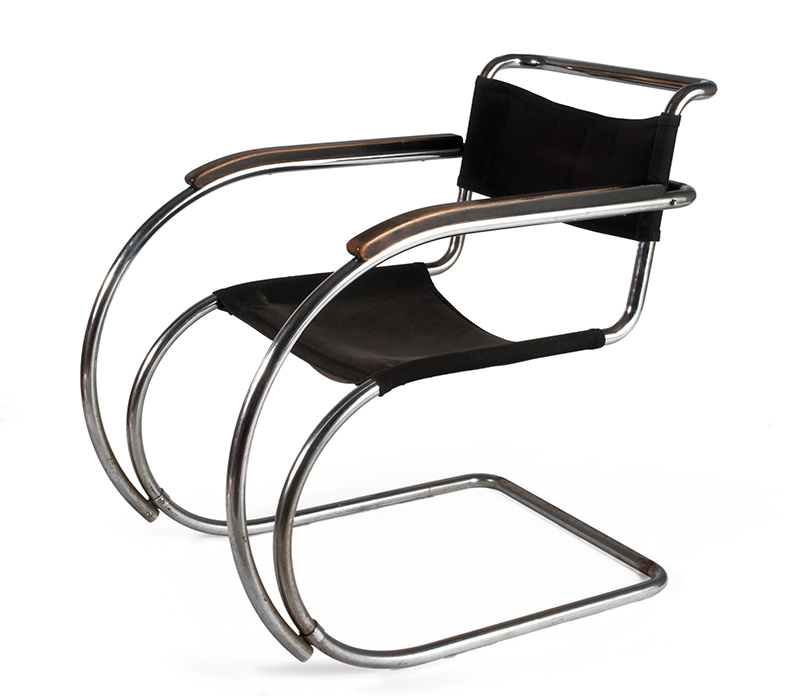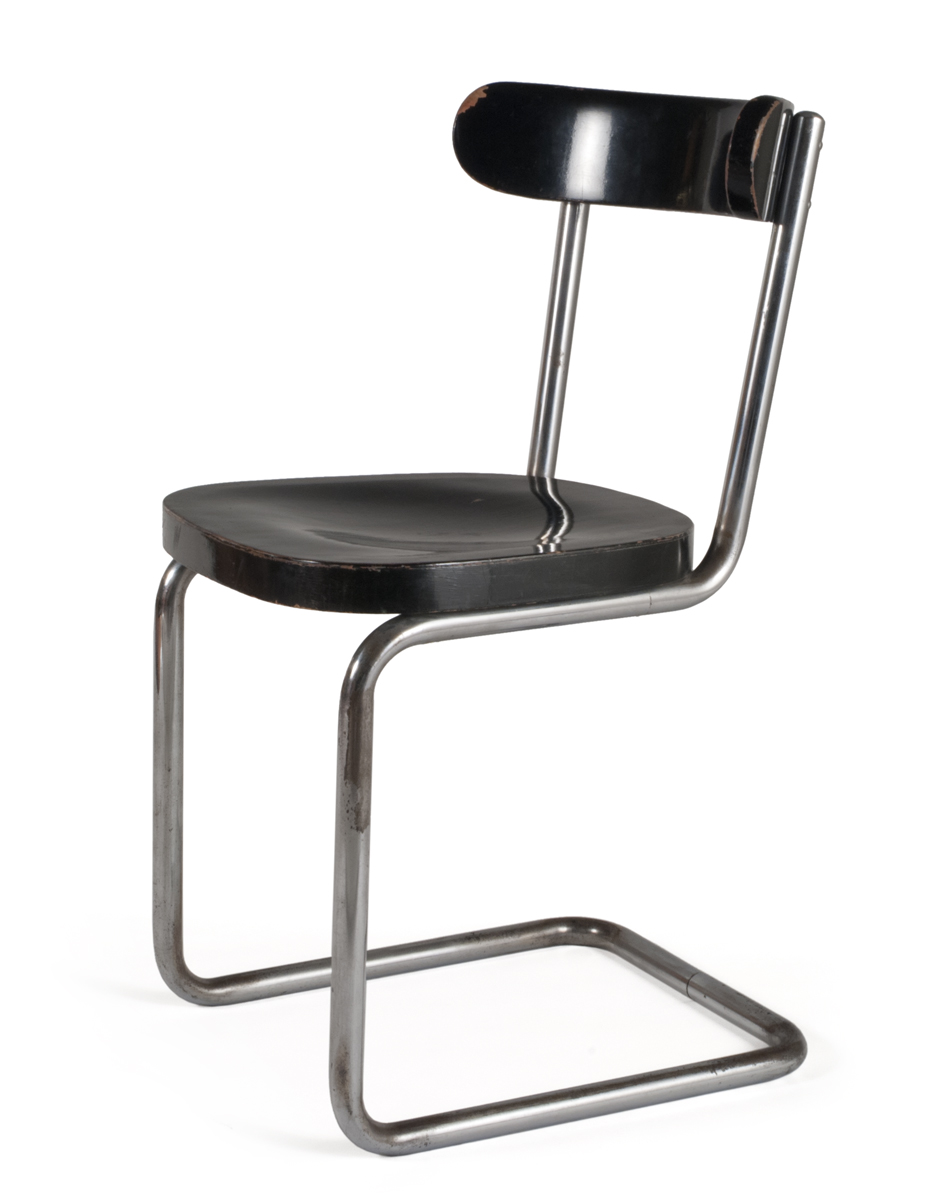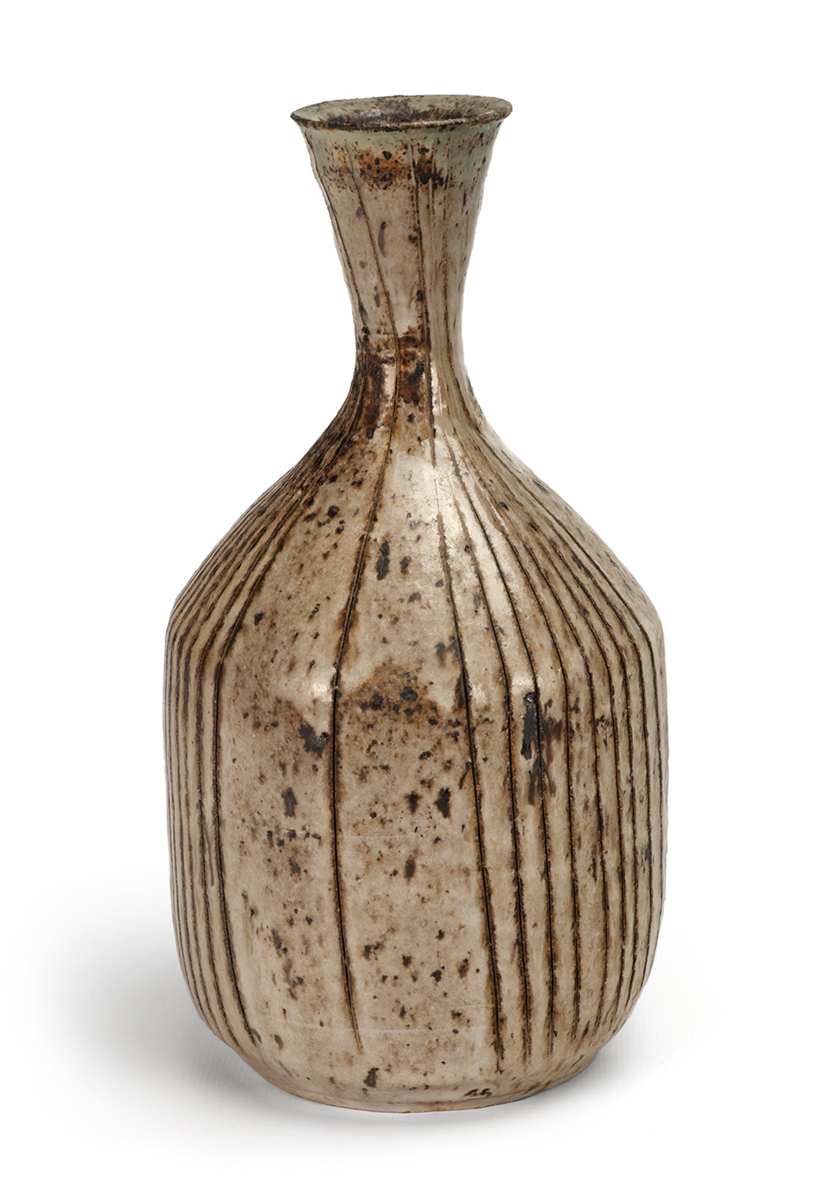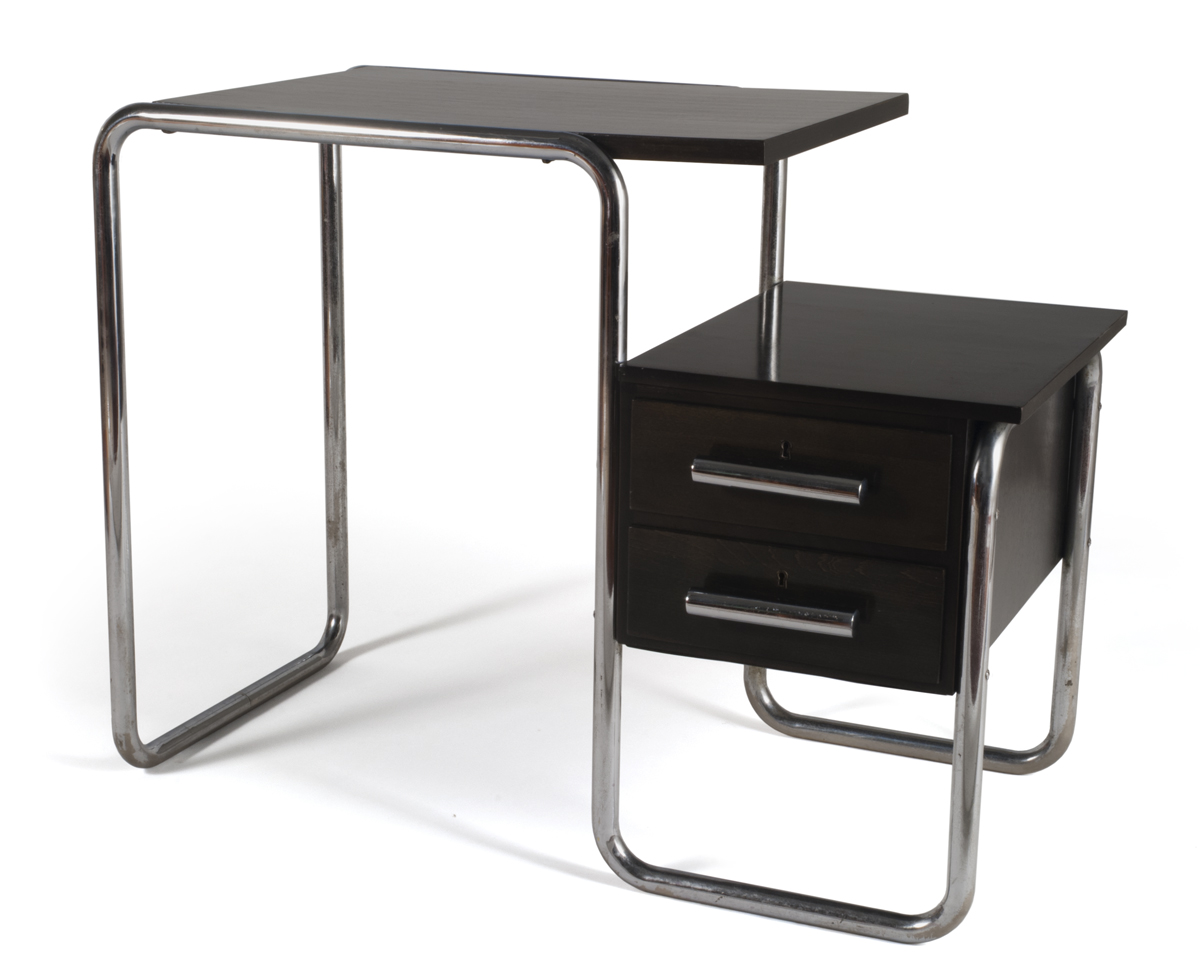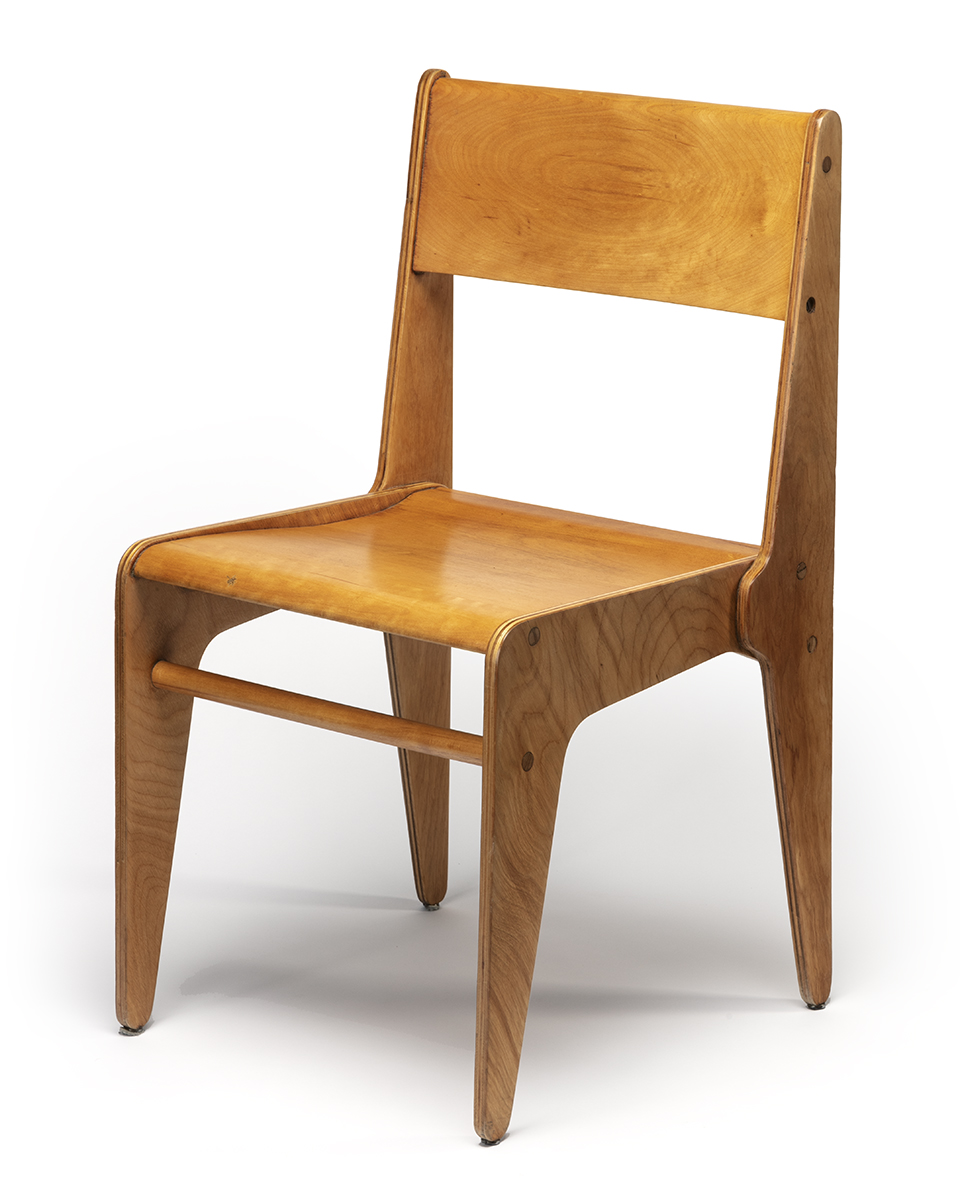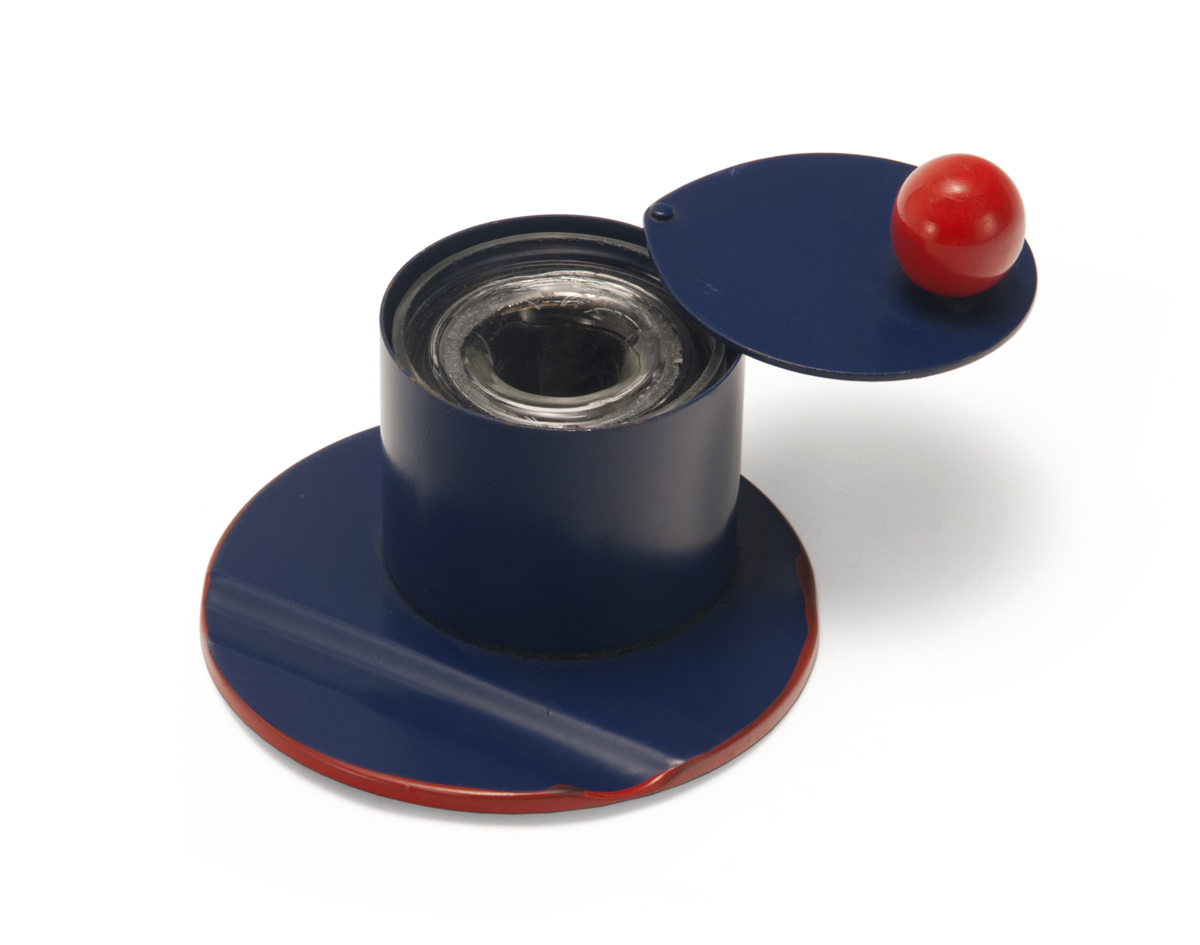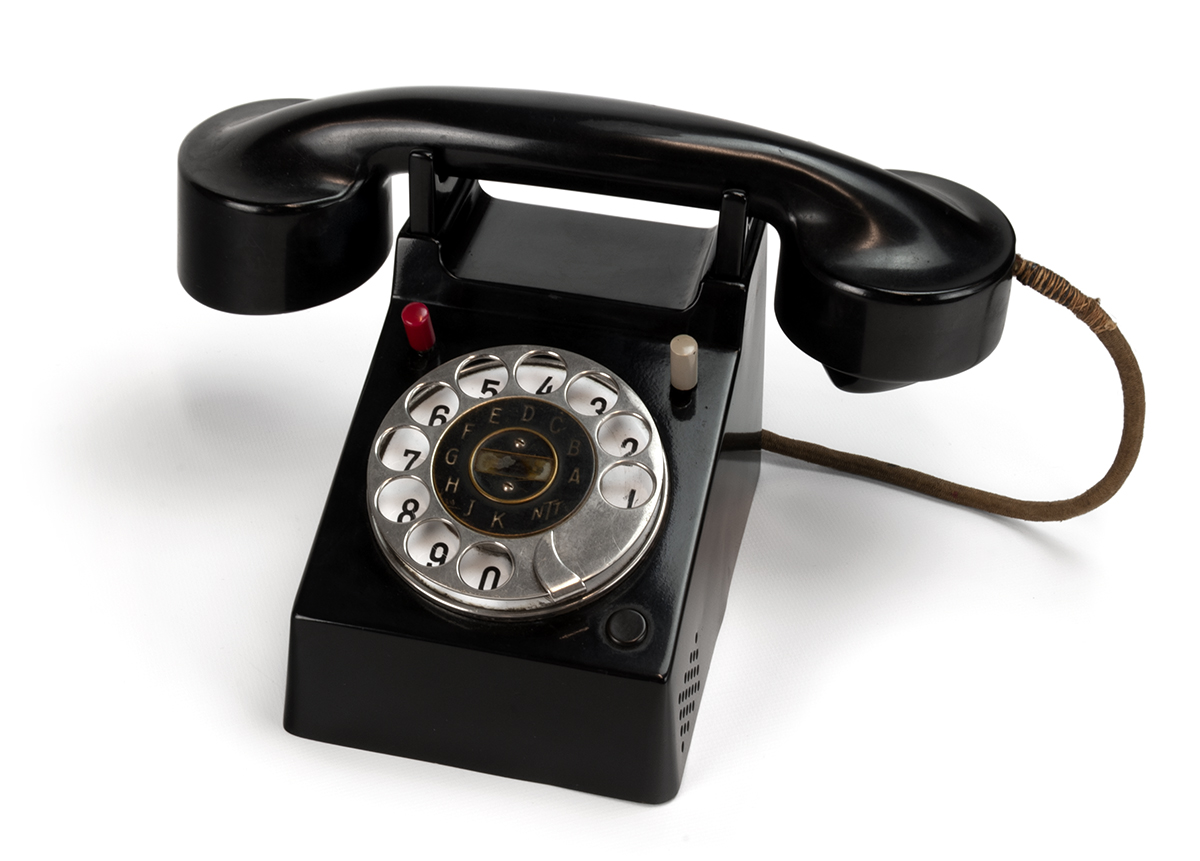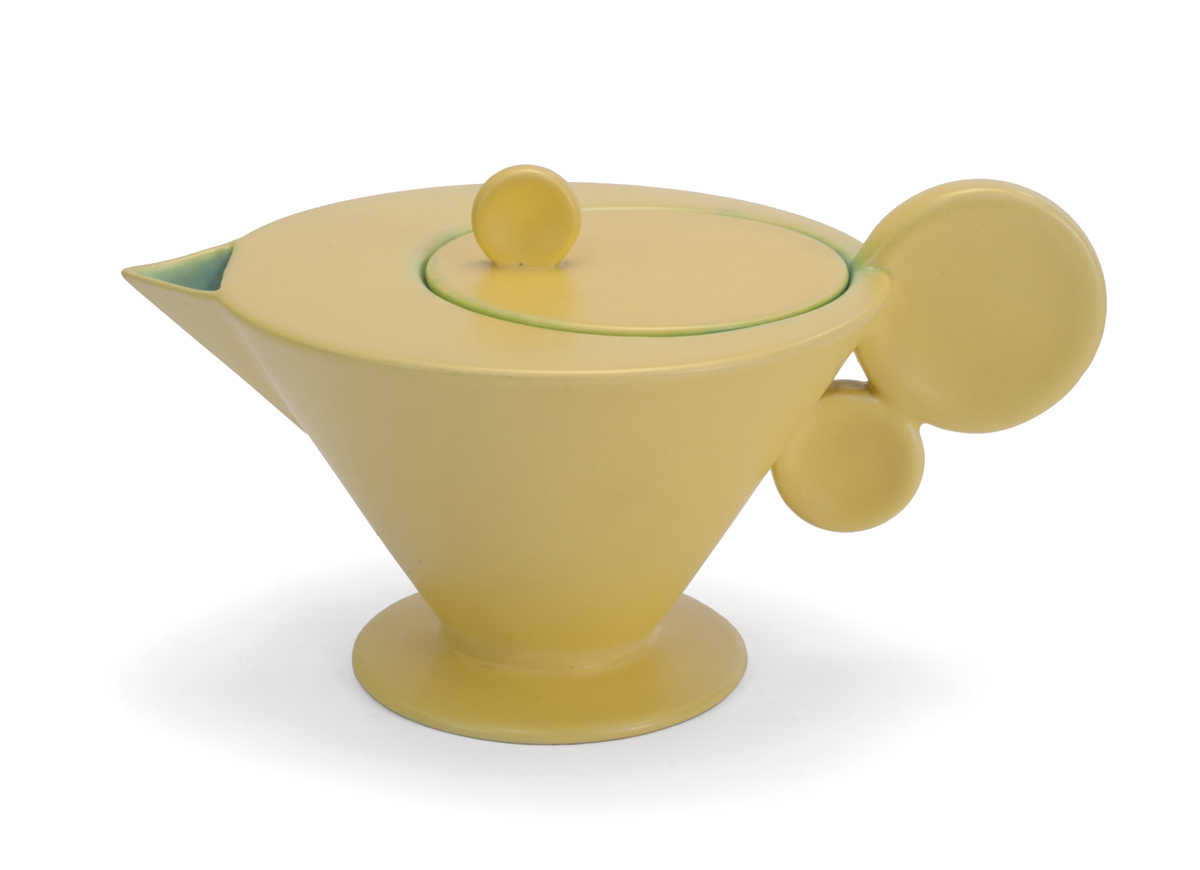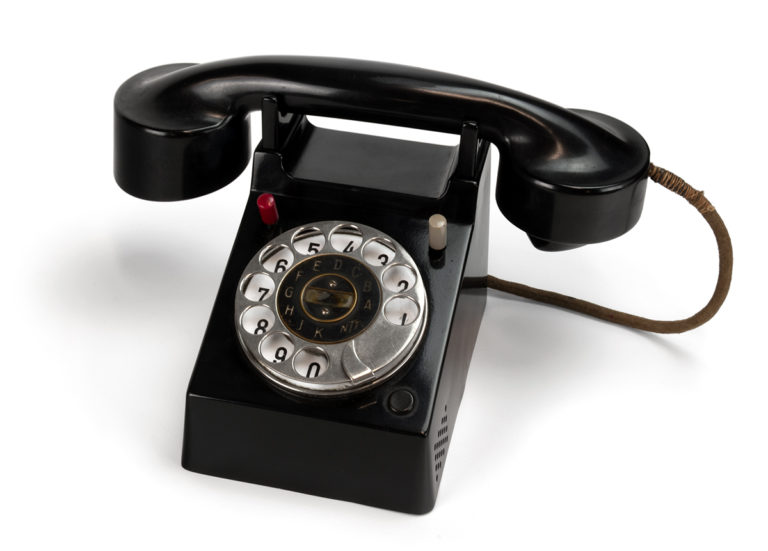
Bauhaus Telefon
Design Date 1929
Manufacturer H. Fuld & Company, Telefonbau & Normalzeit (1899–1933), Frankfurt am Main, Germany
Media metal and plastic, textile covered cord
Dimensions 5 1/4 x 9 3/4 x 6 1/4 inches
The Bauhaus Telefon emerged out of Germany in the late 1920s as a design component of Neues Frankfurt or “New Frankfurt,” an urban development project that addressed the affordable housing shortages and economic challenges following the end of World War I. The Deutsche Werkbund and Bauhaus were involved with the housing project, giving the rotary-style phone its name. Though it did not actually come out of the Bauhaus itself, the phone’s simplistic, clean design is on par with the modernist design principles championed by the Bauhaus school; that set it apart from other telephones of the day. In 1927, H. Fuld & Co. held a design competition for telephones, resulting in the Frankfurt model seen here. Though its official design origins are mysterious, the black metal and Bakelite phone’s design has been attributed to both Richard Schadewell and Marcel Breuer, with some theorizing that the former was responsible for the phone’s housing and the latter designed the handset.
ON VIEW in Bauhaus Gallery 5
Markings "TN" logoplate on rear, manufacturers marks bottom
Credit Line Collection Kirkland Museum of Fine & Decorative Art
Accession Number 2007.1069

